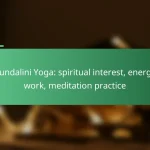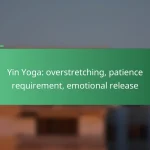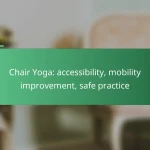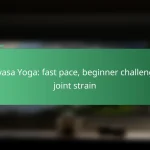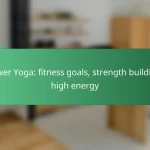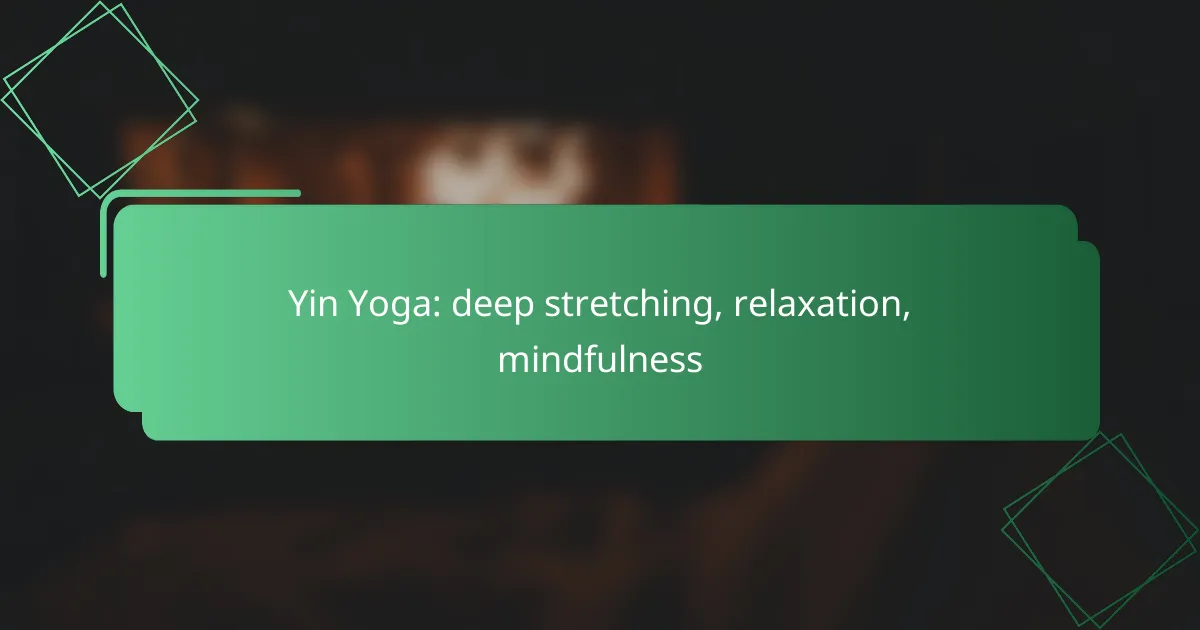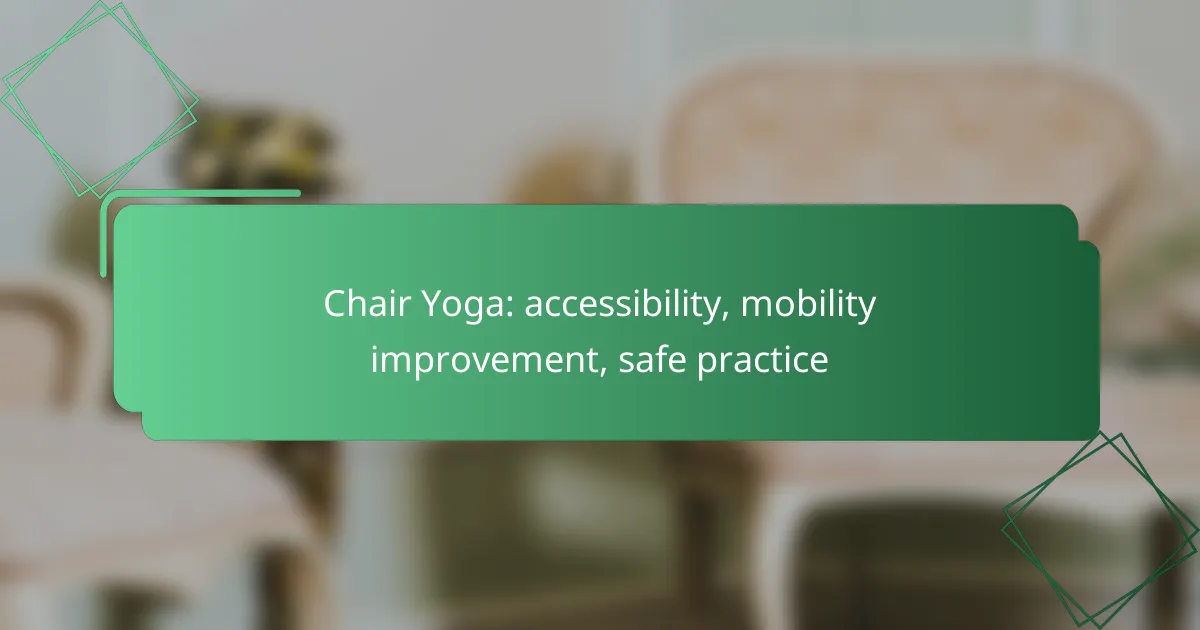Yin Yoga is a restorative practice that emphasizes deep stretching and mindfulness, making it an ideal antidote to the stresses of urban living. By holding poses for extended periods, it targets the body’s connective tissues, promoting relaxation and emotional release while enhancing flexibility and joint health.
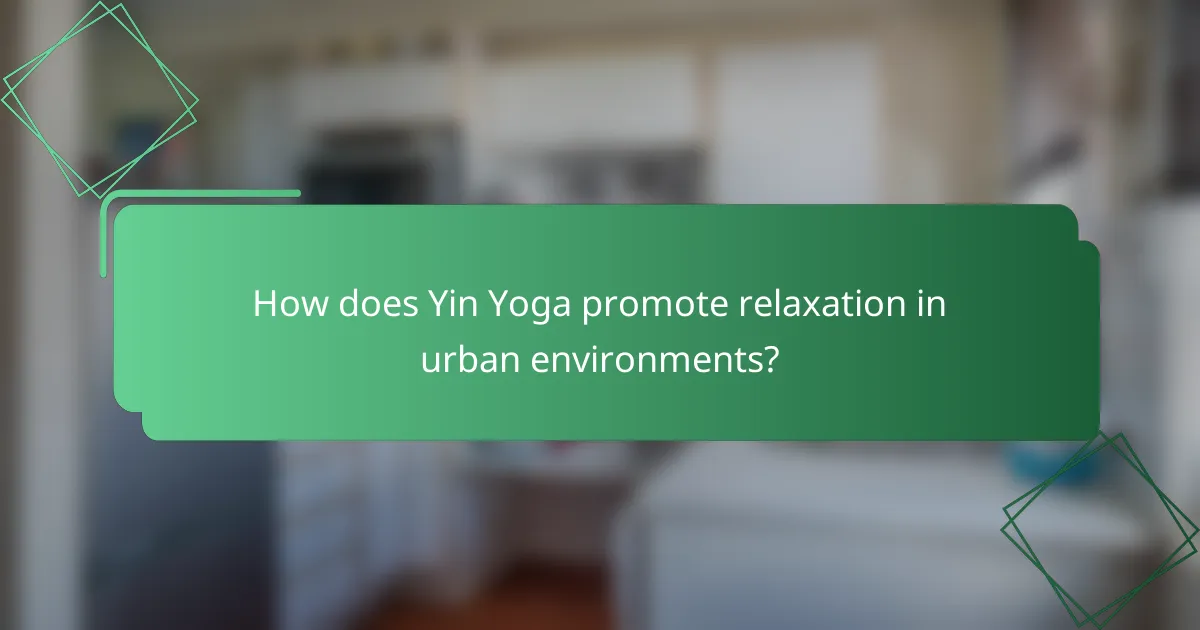
How does Yin Yoga promote relaxation in urban environments?
Yin Yoga promotes relaxation in urban environments by encouraging deep stretching and mindfulness, which counteracts the stressors of city life. The practice focuses on long-held poses that stimulate the body’s connective tissues, fostering a sense of calm and tranquility.
Reduces stress levels
Yin Yoga effectively reduces stress levels by activating the parasympathetic nervous system, which induces relaxation. The slow pace and prolonged holds of poses allow practitioners to release tension accumulated from daily urban pressures.
Incorporating Yin Yoga into a weekly routine can lead to noticeable decreases in anxiety and stress, making it easier to navigate the fast-paced urban lifestyle. Aim for at least one session per week to experience these benefits.
Enhances mindfulness practices
Yin Yoga enhances mindfulness practices by encouraging practitioners to focus on their breath and bodily sensations during each pose. This heightened awareness fosters a deeper connection to the present moment, essential for effective mindfulness.
To maximize mindfulness, consider dedicating a few minutes before and after each session to meditation or reflection. This can deepen your relaxation experience and improve overall mental clarity.
Improves sleep quality
Yin Yoga can significantly improve sleep quality by promoting relaxation and reducing stress before bedtime. Engaging in a gentle Yin practice in the evening helps signal to the body that it’s time to wind down.
For optimal results, try incorporating Yin Yoga into your nighttime routine at least two to three times a week. Focus on poses that open the hips and chest, as these areas often hold tension that can disrupt sleep.
Encourages deep breathing
Yin Yoga encourages deep breathing, which is crucial for relaxation and stress relief. The practice emphasizes slow, intentional breaths that can help lower heart rates and promote a sense of calm.
To enhance your breathing during sessions, practice inhaling deeply through the nose and exhaling slowly through the mouth. This technique can be particularly effective in urban settings where air quality may be a concern.
Fosters emotional balance
Yin Yoga fosters emotional balance by allowing individuals to process feelings and emotions that may arise during practice. The stillness of the poses creates a safe space for self-reflection and emotional release.
Regular practice can lead to greater emotional resilience, helping you better manage the ups and downs of urban life. Consider journaling after sessions to track your emotional progress and insights gained through practice.

What are the key benefits of Yin Yoga?
Yin Yoga offers several key benefits, including increased flexibility, improved joint health, enhanced mental clarity, and support for emotional release. This practice focuses on deep stretching and mindfulness, making it effective for both physical and mental well-being.
Increases flexibility
Yin Yoga primarily targets the connective tissues, such as ligaments and fascia, which can lead to greater flexibility over time. By holding poses for longer durations, typically between three to five minutes, practitioners allow their bodies to gradually adapt and stretch deeper than in more dynamic forms of yoga.
To maximize flexibility gains, focus on consistent practice, ideally two to three times a week. Incorporating a variety of poses that target different muscle groups can further enhance results.
Improves joint health
This style of yoga promotes better joint health by increasing circulation and nourishing the joints through gentle stretching. The prolonged holds in Yin Yoga help to release tension and improve the range of motion, which can be particularly beneficial for those with stiff or achy joints.
Consider integrating Yin Yoga into your routine if you experience joint discomfort. Poses like Butterfly or Dragon can specifically target hip and knee joints, providing relief and enhancing mobility.
Enhances mental clarity
Yin Yoga encourages mindfulness and deep relaxation, which can significantly enhance mental clarity. The meditative aspect of holding poses allows practitioners to quiet their minds, reducing stress and improving focus.
To cultivate mental clarity, practice Yin Yoga in a calm environment, free from distractions. Aim for sessions that last at least 45 minutes to fully benefit from the meditative state achieved during the practice.
Supports emotional release
Yin Yoga can facilitate emotional release by encouraging practitioners to connect with their feelings during prolonged poses. This practice allows for introspection and can help individuals process emotions that may be stored in the body.
To support emotional release, approach your practice with an open mind and a willingness to explore your feelings. Journaling after sessions can also help articulate and process any emotions that arise during practice.
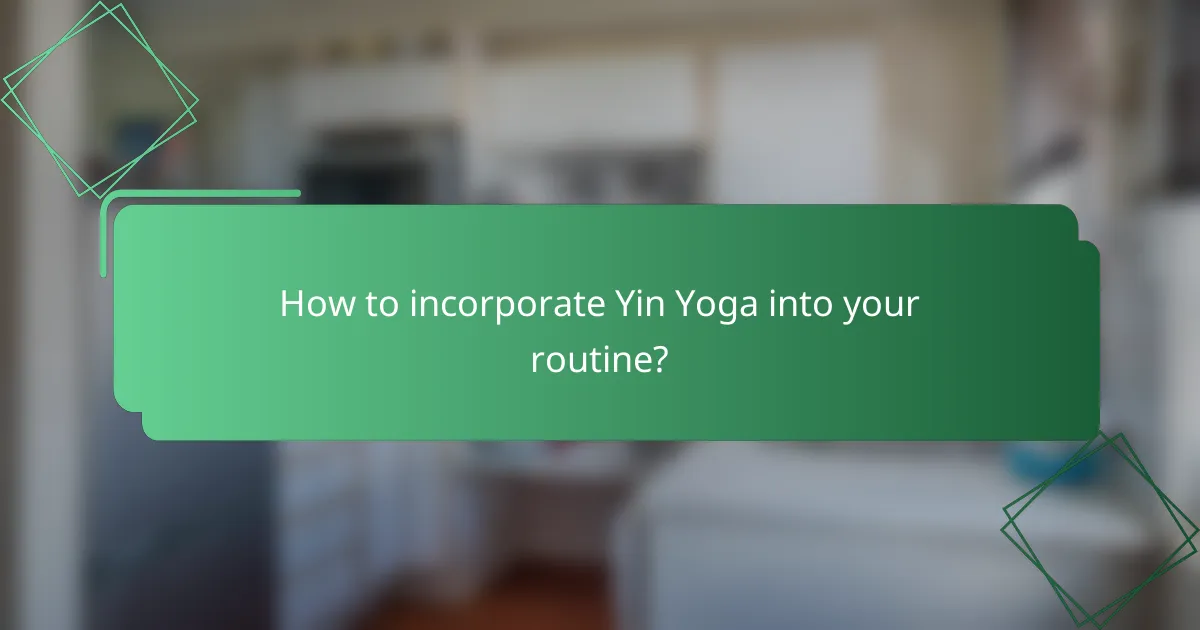
How to incorporate Yin Yoga into your routine?
Incorporating Yin Yoga into your routine can enhance flexibility, relaxation, and mindfulness. Aim to practice regularly, create a conducive environment, and integrate supportive tools to maximize your experience.
Set a regular schedule
Establishing a consistent schedule for your Yin Yoga practice is crucial for reaping its benefits. Aim for sessions that last between 45 minutes to 1.5 hours, ideally two to four times a week.
Consider setting specific days and times that fit your lifestyle, making it easier to commit. Consistency helps your body adapt and deepen your practice over time.
Choose a quiet space
Selecting a quiet and comfortable space is essential for a successful Yin Yoga session. Look for a location free from distractions, where you can fully immerse yourself in the practice.
Ensure the space has adequate ventilation and is at a comfortable temperature. Soft lighting and calming decor can further enhance the atmosphere, promoting relaxation and mindfulness.
Use props for support
Props such as bolsters, blankets, and blocks are invaluable in Yin Yoga, providing support and comfort during long-held poses. They help you maintain proper alignment and reduce strain on your body.
Experiment with different props to find what works best for you. For example, placing a bolster under your knees in a seated forward fold can alleviate tension and allow for deeper relaxation.
Combine with meditation
Integrating meditation into your Yin Yoga practice can enhance mindfulness and deepen your relaxation. Consider starting or ending your session with a few minutes of focused breathing or guided meditation.
Mindfulness techniques, such as body scanning or visualization, can help you stay present and connected to your body throughout the practice. This combination fosters a holistic approach to well-being.

What are the best Yin Yoga poses for beginners?
For beginners, some of the best Yin Yoga poses include Child’s Pose, Butterfly Pose, Supported Bridge Pose, and Reclining Twist. These poses promote deep stretching, relaxation, and mindfulness, making them ideal for those new to the practice.
Child’s Pose
Child’s Pose is a foundational Yin Yoga pose that encourages relaxation and introspection. To practice, kneel on the floor, sit back on your heels, and stretch your arms forward on the ground, allowing your forehead to rest on the mat. This pose gently stretches the back, hips, and thighs while calming the mind.
Hold Child’s Pose for several minutes, focusing on your breath. If you experience discomfort in your knees, consider using a cushion or blanket for support. This modification can enhance comfort and encourage deeper relaxation.
Butterfly Pose
Butterfly Pose opens the hips and stretches the inner thighs, making it an excellent choice for beginners. Sit on the floor, bring the soles of your feet together, and let your knees fall outward. You can lean forward gently to deepen the stretch, but listen to your body and avoid forcing the movement.
Maintain this position for a few minutes, allowing gravity to assist in the stretch. If you find it challenging to keep your back straight, sit on a folded blanket to elevate your hips, which can help you feel more stable and relaxed.
Supported Bridge Pose
Supported Bridge Pose is a restorative pose that opens the chest and stretches the spine. Lie on your back with your knees bent and feet flat on the floor, hip-width apart. Lift your hips and place a block or cushion under your sacrum for support, allowing your body to relax into the pose.
Stay in Supported Bridge Pose for several minutes, focusing on your breath and the sensations in your body. This pose can help alleviate tension in the lower back and promote a sense of calm. If you feel any discomfort, adjust the height of the support or lower your hips slightly.
Reclining Twist
Reclining Twist is a gentle pose that promotes spinal mobility and relaxation. Lie on your back, draw one knee to your chest, and then guide it across your body to the opposite side while keeping your shoulders grounded. Extend your arms out to the sides for added support and balance.
Hold the twist for a few minutes, then switch sides. This pose can help release tension in the back and improve digestion. Ensure you move slowly and breathe deeply throughout the stretch to enhance its calming effects.

